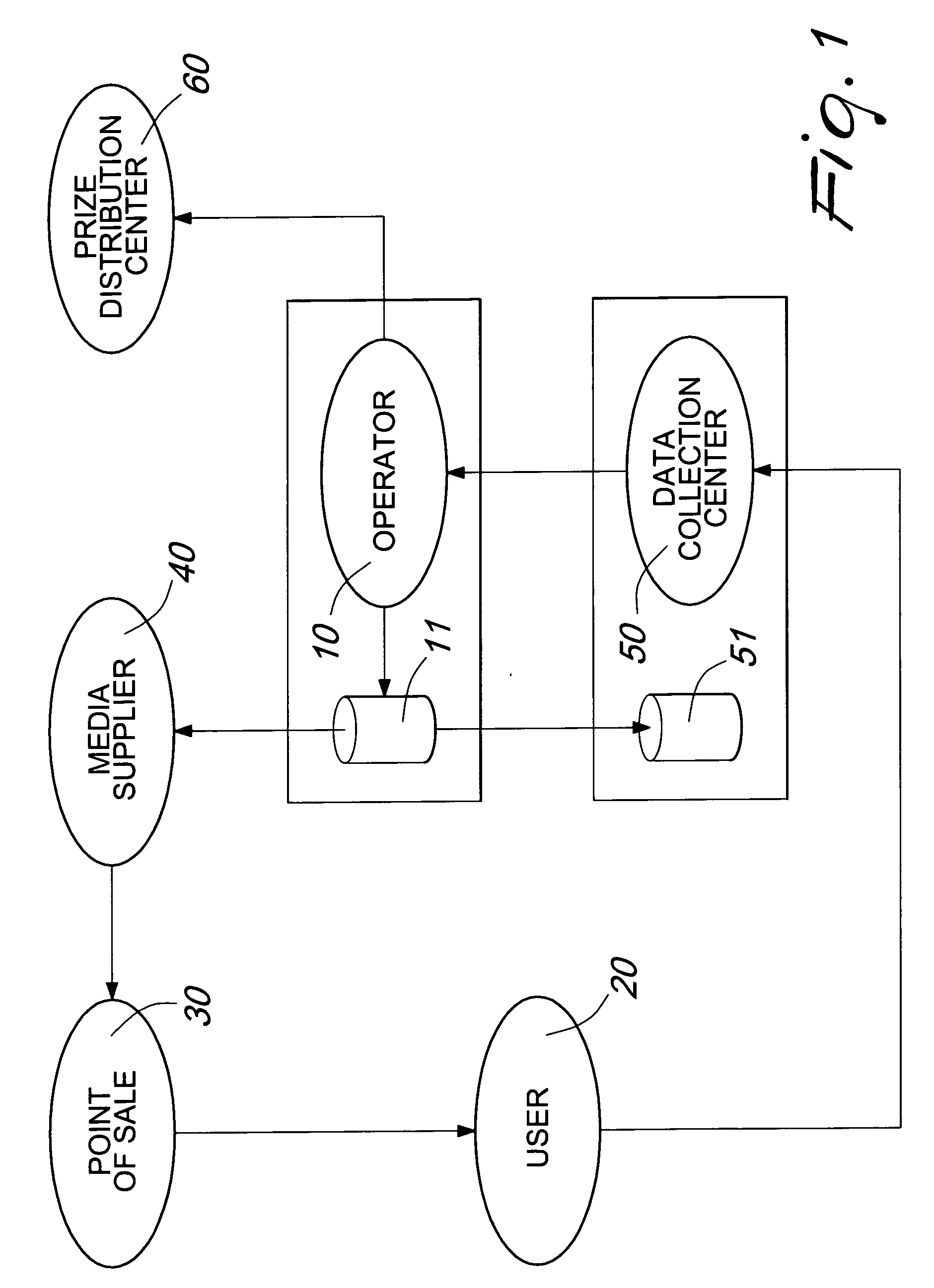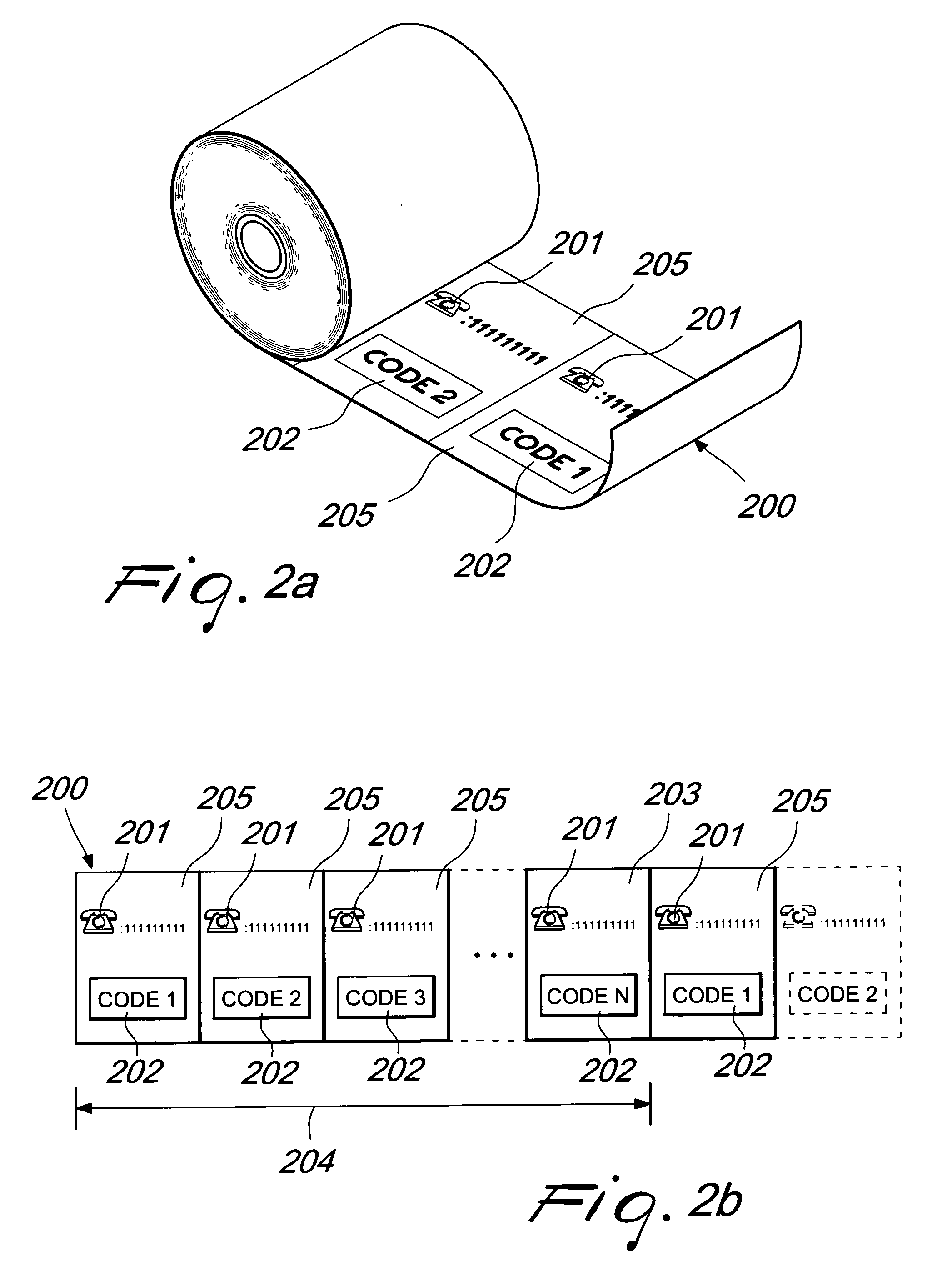Method and system for determining and assigning wins in prize contests
- Summary
- Abstract
- Description
- Claims
- Application Information
AI Technical Summary
Benefits of technology
Problems solved by technology
Method used
Image
Examples
Embodiment Construction
[0038]FIG. 1 is a schematic view of a system for performing the method according to the invention.
[0039] The system comprises an operator 10, which manages a prize contest organized by an organization, such as for example a store chain, in various supply points that can be accessed by a user or customer 20; if the organization is a store chain, said supply points can be constituted by points of sale 30.
[0040] The operator 10 relies on a supplier 40 of print media used by the points of sale 30 in its ordinary activities, such as for example paper rolls for printing checkout receipts or numbered tickets for sorting customer queues. The paper that is used can be of the thermal type.
[0041] Moreover, the operator 10 relies on a data collection center 50, such as for example a call center, which is meant to manage the wins, and on a prize distribution center 60.
[0042] The operator 10 generates a finite series of participation codes or contest access codes, which are stored in a databa...
PUM
 Login to view more
Login to view more Abstract
Description
Claims
Application Information
 Login to view more
Login to view more - R&D Engineer
- R&D Manager
- IP Professional
- Industry Leading Data Capabilities
- Powerful AI technology
- Patent DNA Extraction
Browse by: Latest US Patents, China's latest patents, Technical Efficacy Thesaurus, Application Domain, Technology Topic.
© 2024 PatSnap. All rights reserved.Legal|Privacy policy|Modern Slavery Act Transparency Statement|Sitemap



